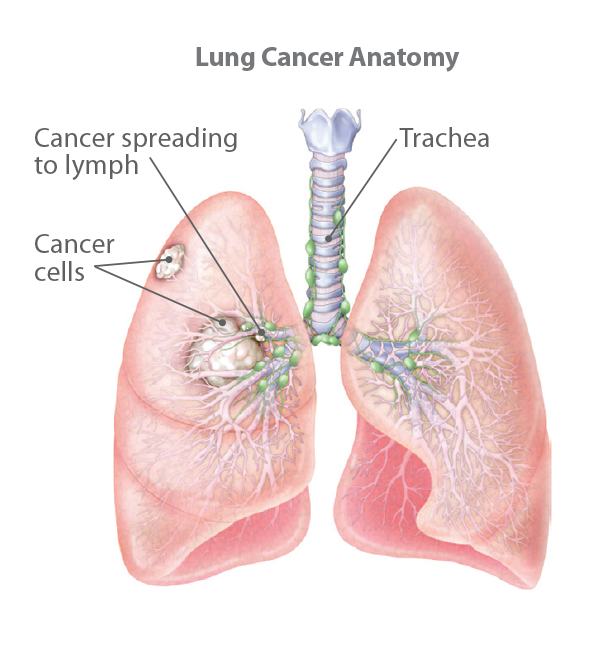Understanding lung cancer
There are two main types of lung cancer: small cell lung cancer and non-small cell lung cancer. The type of lung cancer a patient has is determined by the appearance of the cancer cells under a microscope and how fast the cancer cells spread in the body.
Small cell lung cancer accounts for approximately 10 to 20 percent of all lung cancers. This type of lung cancer is most commonly associated with tobacco smoking.
Non-small cell lung cancer accounts for accounts for 80 to 90 percent of all lung cancers. Most often, it develops slowly and causes few or no symptoms until it has advanced..
Stages of lung cancer
The stage of lung cancer is one of the most important factors in evaluating your treatment options.
Small cell lung cancer staging
Small cell lung cancer stages are classified in one of two ways:
Limited stage: Cancer is in one lung, sometimes including nearby lymph nodes.
Extensive stage: Cancer is in both lungs, the fluid around the lung (the pleura) or other organs in the body.
Non-small cell lung cancer staging
Non-small cell lung cancer staging uses the TNM system:
Tumor (T) describes the size of the original tumor.
Node (N) indicates whether the cancer is present in the lymph nodes.
Metastasis (M) refers to whether cancer has spread to other parts of the body.
A number (0–4) or the letter X is assigned to each of the factors above. A higher number indicates increasing severity.
For instance, a T1 score indicates a smaller tumor than a T2 score. The letter X means the information could not be assessed.
Once the TNM score is determined, an overall stage is assigned:
Occult-stage non-small cell lung cancer: Cancer cells are found in sputum, but no tumor can be found in the lung by imaging tests.
Stage 0 non-small cell lung cancer: Cancer at this stage is known as carcinoma in situ. It is tiny in size and has not spread into deeper lung tissues or outside the lungs.
Stage 1 non-small cell lung cancer: Cancer may be present in the underlying lung tissues, but the lymph nodes remain unaffected.
Stage 2 non-small cell lung cancer: Cancer may have spread to nearby lymph nodes or into the chest wall.
Stage 3 non-small cell lung cancer: Cancer continues to spread from the lungs to the lymph nodes or nearby structures and organs, such as the heart, trachea and esophagus.
Stage 4 non-small cell lung cancer: Cancer has metastasized beyond the lungs and may now affect the liver, bones or brain. Stage 4 lung cancer may be divided into stage 4A and stage 4B, depending on where the disease has spread.

